
Submitted questions will be posted with my response by the following Tuesday or before.
Submitted comments will be moderated and approved within 24 hours.
“Hypoallergenic” Trees
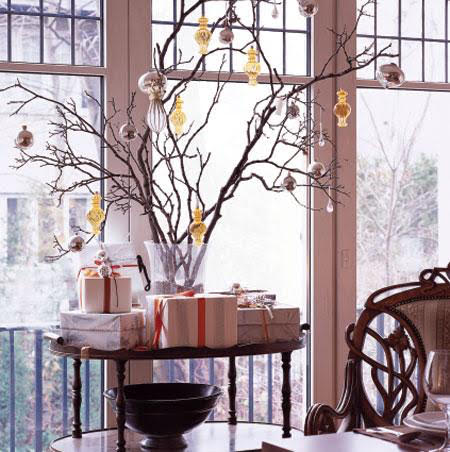 If you are sensitive to any evergreen tree, you could, obviously, use a fake tree made of plastic or metal, but there are ways to make a real tree more tolerable. People with sensitivities have given me some great ideas.
If you are sensitive to any evergreen tree, you could, obviously, use a fake tree made of plastic or metal, but there are ways to make a real tree more tolerable. People with sensitivities have given me some great ideas.
- Decorate a live tree outside and put it in a picture window. That way you can see it but don’t have to smell it. Then place your gifts “under” the tree by putting them under the window. You could even plant a live tree in the window so it would be there year after year.
- Put up a tree with outdoor lights and bird food (pine cones with peanut butter and millet branches) outside a picture window. Your tree will be filled with birds.
- Find any green plant that you tolerate and decorate it with lights and ornaments.
- Use bare branches from a florist or outdoors and decorate it with Christmas tree ornaments.
One year, when I was on a very tight budget, I decorated a branch that had fallen in a storm. Though evergreens have a tradition with being associated with the continuation of life through the long winter, really you can decorate anything—it’s the spirit that counts!
Nontoxic Christmas Tree Ornaments
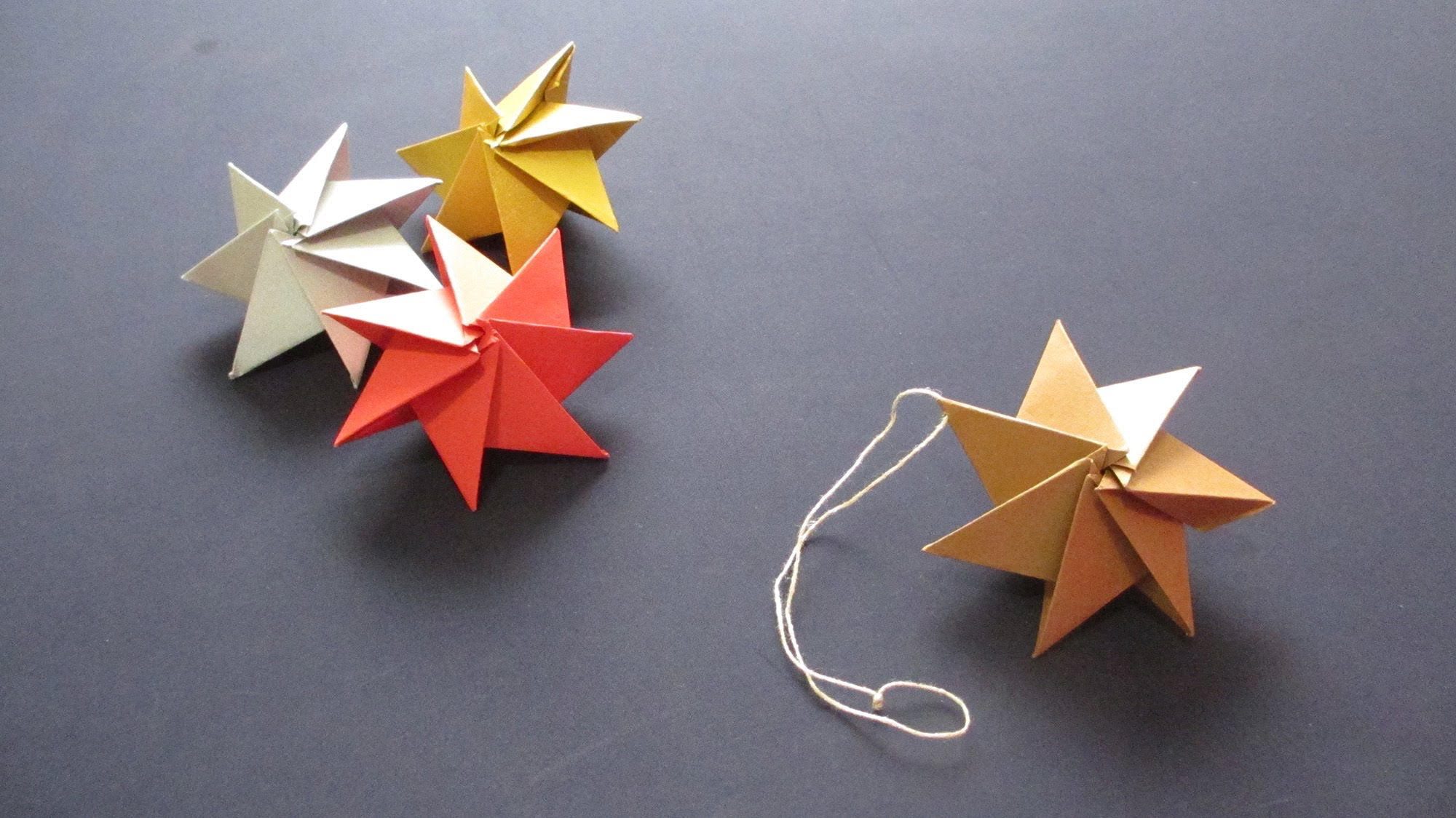 Instructions at https://youtu.be/GHMRnBRf6_c
Instructions at https://youtu.be/GHMRnBRf6_c
Like most everything else today, it seems like most Christmas tree ornaments are made from plastic and other synthetic materials. But that wasn’t always so.
The first ornaments on holiday trees reflected the “ornaments” hanging on natural trees during the season: fruits, nuts, and cones. To continue this tradition:
- Tie small red and green apples to the tree with colored ribbons
- string fresh cranberries and popcorn
- glue gold tie to nuts and hang them
- hang dried apple rings and cinnamon sticks for fragrance.
Cookies are a popular tree decoration. Gingerbread cookies add a wonderful fragrance to the natural scent of the tree. If you wish to make inedible “cookies” that you can reuse year to year, try this recipe:
Reusable “Cookie” Ornaments
1 cup salt
2 cups flour
1 cup water
2 tablespoons vegetable oilSpices or powdered pigments can be added to color the dough
Mix dry ingredients together in a bowl. Add water and oil and stir until blended. Knead with your hands to make a smooth texture. Roll dough out on a cutting board to desired thickness (thick enough so they won’t break easily) and cut with cookie cutters or a knife. Use a straw to make a hole at the top for threading a ribbon. Bake at 250 degrees until hard (1-2 hours).
When cookies are cool, decorate with water-based paints. Put a ribbon through the hole, and hang on the tree.
Eggshells can also be made into ornaments.
- Poke a hole into each end of an egg with a sterilized sewing needle.
- Over a bowl, blow into the hole the top of the egg (the small end) so that the insides come out through the bottom hole. Save the egg insides for cooking. Paint eggs with water-based paints.
- Bend a pipe cleaner and stick it in the top of hole of the egg. Bend the other end and hang it on the tree.
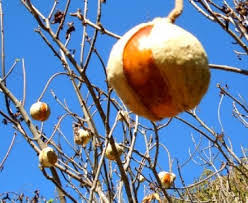
California buckeye
You can also decorate your tree with whatever is growing naturally in your area. Here in Northern California, buckeye trees lose their leaves during the fall, leaving branches hung with “buckeye balls” that are just the size of tree ornaments. We also have a native shrub called coyote bush that produces a small white flower in December that makes it look like it is covered with snow. Branches of coyote bush placed between tree branches makes holiday tree look like it just came in from a frosty forest, without the fake snow flocking.
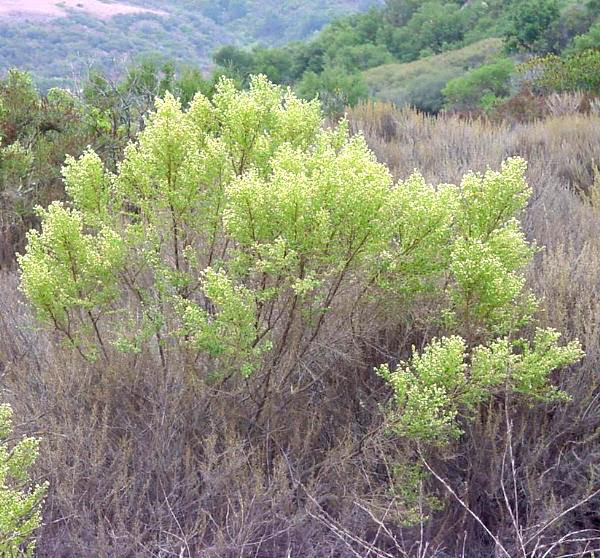
Coyote bush
Check your own garden and community for cones, berries, dried seed pods, twigs, and feathers. After the holidays, they can go in the compost.
Save holiday wrapping paper, greeting cards, and other interesting papers and pictures (including pages from magazines) throughout the year. Designate a box for collecting them instead of throwing them in the trash, then use them to make colorful and interesting paper ornaments:
- Origami and other paper craft books will have many good ideas and instructions.
- Make paper chains by making a loop with a strip of paper, then staple it shut and make another loop by sliding the strip of paper through the first loop.
- Cut paper ‘snowflakes’ from used office paper
- Images from old holiday cards or cut from magazines can be trimmed and tied to the tree with a ribbon (magazine images will need to be glued to a 3×5 card or scrap cardboard for stiffness).
Throughout the year, look for ornament possibilities at flea markets and garage sales. Keep your eyes open for ornaments for sale and any small items that would make interesting ornaments. Look for materials that could be modified in some way to make ornaments.
The History of Holiday Trees
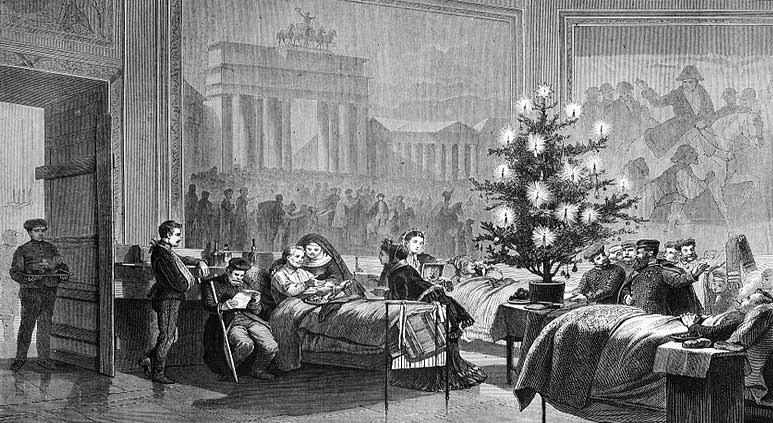
When we celebrate the winter season by decorating our homes with evergreen trees, wreaths, and boughs, we continue a tradition that has its roots in the earliest beginnings of humankind. Throughout the world, virtually every culture has used evergreens for some kind of celebration around the Winter Solstice – a yearly affirmation of the continuation of Life and renewal of our integral participation in all Life. By honoring the tree with decorations, we acknowledge Nature and its continuous cycles that sustain our lives.
After the last ice age, Europe was covered with immense forests. Because prehistoric people depended on the forests for food and shelter, fire, transportation, and tools, trees were an important part of their environment. In addition to their practical uses, trees seemed to embody the cycle of Nature itself—they grew and made sounds, gave birth to leaves and flowers and fruit, they “bled” when cut, and became old and died.
Trees symbolized fertility and life, strength, and steadfastness of spirit. Where evergreens were abundant, they became the trees more highly revered—while other trees lost their leaves and seemed to die during the winter, the evergreens stayed fresh and green, even through the most severe weather. That evergreens continued to hold their leaves and their “life” through the bleakness of winter resulted in their use as powerful symbols of the continuance of life. Evergreen boughs were reminders of the green plants that would grow again when the light-filled days of summer returned.
EVERGREENS IN ANCIENT CELEBRATIONS
Including trees in celebration and worship is common around the world. In China, sacred trees bore red banners with words of praise and thanksgiving on them. Greek and Roman goddesses and gods each had their special trees, which were draped in garlands of flowers.
The Winter Solstice marks the point of deepest darkness and, following, a return of the light that made Nature green and fruitful.
The use of evergreen trees for celebration at Winter Solstice began with the exchange of fir-tree twigs and the display of fir-tree twigs and branches on homes and in meeting places as a wish for the continuation of life. These twigs developed into bundles, then later into the whole tree.
Romans decorated their homes and temples with evergreen boughs. Winter Solstice was a special time of peace and equality when wars could not be declared, when slaves and masters could eat at the same table.
Eqyptians brought green date palm leaves into their homes to symbolize life’s triumph over death.
European Druids tied apples to the branches of oaks and firs to thank the god Odin for blessing them with fruitfulness, and also made offerings of cakes shaped like fish, birds, and other animals. Lighted candles, honoring the sun god Balder, were placed on the boughs. The Druids used evergreen holly and mistletoe as symbols of eternal life, and placed evergreen branches over doors to keep away evil spirits.
Late in the Middle Ages, Germans and Scandinavians placed evergreen trees inside their homes or just outside their doors to show their hope in the forthcoming spring.
THE FIRST CHRISTMAS TREE
Legend has it that the tradition of decorating trees to celebrate Christmas began with Reformation leader Martin Luther.
One clear, crisp Christmas Eve, around the year 1500, Luther was walking home through the woods. He paused for a moment in a grove of tall pine trees to gaze at the beauty of the starry sky. The fragrance of the pines reminded him of incense and the wind in their branches sounded like a congregation at prayer. From where he stood, it seemed like thousands of stars had settled on snow-dusted branches. Luther brought a small fir tree home and covered with small candles so he could share this story with his children. He lit the candles in honor of the birth of Christ.
The first Christmas tree actually documented occurred in 1605 in Strassburg, Germany. It was without candles, but decorated, as the Druids did, with bright red apples.
The Christmas tree migrated next to Austria and France, and then to England. When Queen Victoria of England married Prince Albert of Germany in 1840, he brought to England his German Christmas tree, which was by then covered with candles and hand blown glass ornaments. Pictures of the Queen and her family around a tabletop tree appeared in the newspapers, and soon all England had similar trees.
THE CHRISTMAS TREE IN AMERICA
The Christmas tree became the central focus of holiday celebrations in American homes a few years later when Gody’s Lady’s Book published a drawing of a family around a Victorian decorated tree. The Christmas tree may have come to the United States as early as the late-1700s, with German soldiers who were hired to bolster English troops during the American Revolution. According to legend, on the bitter cold Christmas Eve of 1776, at Trenton, New Jersey, the presence of a candlelit evergreen tree so reminded German soldiers of home that they abandoned their guard posts to eat, drink and be merry. George Washington attached that night and defeated them, turning the tide for the Revolution.
COMMERCIAL CHRISTMAS TREES
The commercial Christmas tree market began in 1851 when Catskill farmer Mark Carr hauled two ox sleds of evergreens into New York City and sold them all. By 1900, one in five American families had a Christmas tree, and 20 years later, the custom was nearly nationwide.
Christmas tree farms began during the depression. Nurserymen couldn’t sell their evergreens for landscaping, so they cut them for Christmas trees. Cultivated trees were preferred because they had a more symmetrical shape than wild ones.
Wreaths and Wreathmaking
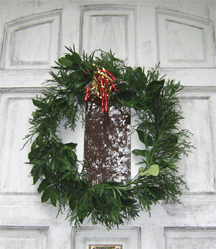
Wreath I made myself in Florida in 2005.
Wreaths are now a common sight at all times of year, but they have their origins in the ancient wreaths made for Winter Solstice.
Back in pre-industrial times, people were dependant for their survival on what they could obtain from their natural surroundings. In the northern latitudes, winter was a time when there was little food. This made the Winter Solstice very important, for on that day the days would begin to get longer and light and life would return to the Earth.
Because the return of the sun was so important, they deveoped traditions they believed would ensure the return of the light.
The everygreen wreath was one of these traditions. By making wreaths in circular shapes using evergreens that continued to survive when all other plants had died, they aligned their own intentions for life with the process occurring in nature.
Though evergreen wreaths are widely sold everywhere at Christmas time, I like to make my own. It is a way to take an hour or two away from the hustle and bustle of the season to sit and just be aware of the season and it’s meaning. I also make my wreath from local evergreens, rather than evergreens imported from other places, which connects this activity to the place where I live.
I learned to make wreaths when I lived in Northern California. I lived in a village set in hills covered with evergreen fir and bay forest, with stands of evergreen redwood nearby. I was on the Board of Directors of our local Community Center and every year we put on a Holly Fair as a fund raiser. We had tables for local craftspeople, Santa Claus, I would play the piano for sing-along Christmas carols, there were cookies for kids to decorate and we had a room set up where visitors could make a wreath and take it home.
Invariably, there would be a big storm right before this event and the ground would be covered with all kinds of fallen branches, so we had no shortage of evergreens. People would just drive around in their pickup trucks and collect them off the streets and bring them in for wreathmaking.
Usually the wreathmakers were women. The first year, they taught me how to make a wreath. In the following years, I taught other women how to make wreaths. It was so soul-satisfying to sit and talk with other women while we all sat together and fashioned these circles of life–each one unique and an expression of that woman’s own creativity. Usually we would all go home and hang them on our front doors, so I would see all the handmade wreaths as I would drive around town.
When I moved to Florida in 2002, I didn’t have a place to go to make a wreath, so I didn’t make one in 2002 or 2003 or 2004. But in 2005, I decided to just make one myself. We found a Christmas tree farm and got a native Southern Red Cedar tree, so I used sprigs of cedar trimmed from the lower discarded branches. Then I added spiky-leaded evergreen pittisporum that grows in my garden and another evergreen I haven’t identified yet. Then I added a recycled bow I received on a gift the previous year.
Now that I’m back it California I have no shortage of material with which to make a wreath this year.
How to make a wreath
Making a wreath is very easy.
Traditionally, I imagine that long grasses were used to make the wreath base, and tied into a circle with vines. Then evergreens were attached, again by tying with vines.
I’m going to tell you the modern method that I use. You’ll need some floral tape and 22 gauge wire, which are easy to find at craft stores.
First, make a circle frame with the wire to your desired size (you can also purchase wreath frames from craft stores or use a wire coathanger–leave the hook intact for hanging).
Next, gather your greens and cut pieces about 4 inches long. Strip the bottom of the stem of any greenery up about one-half inch. Make little bundles and wrap the stem end with floral tape to hold them together. For a 12-inch diameter wreath frame, I make about fifteen little bundles.
Then, attach the bundles to the wire frame with floral tape. Attach the first one, then add the next one right close so they overlap. When all the bundles are attached at their base, use the wire to attach the tops of the bundles to the base. You just need to attach the back of the bundle to the base, leaving the front free.
Add any decorations you want by attaching them with wire.
Search on “Wreath Making Instructions” or “Making a Fresh Wreath” in your favorite search engine for lots more instructions and pictures.
My Thanksgiving Organic Heritage Turkey—A Shining Example of a Toxic Free Product

On 6 November I wrote a whole post about the different types of turkeys available and announced at the end of the post that I had decided to pre-order a heritage turkey, grown by local Sonoma County 4H club members and sold through the Slow Food Russian River Heritage Turkey Project.
Well I did pre-order that turkey and it was an amazing experience. I went to a local family farm the day before Thanksgiving to pick up my turkey. I wrote a check directly to the farmer. It was the best turkey I have ever eaten. It had a lot more fat, so it was moist and juicy and tasty, but not fatty (it all drips away during roasting). The flavor was turkey x10. And the aroma was incredible. Well worth every dollar.
But what I want to tell you about in this post is about this heritage turkey as a nontoxic product.
First of all, this turkey did not come from a factory farm, or any kind of agribusiness. It was raised on a family farm through a 4H program.
I want to encourage you to read all about the Heritage Turkey Project.
It began in 2001, when Slow Food USA started a project to reintroduce heritage turkeys to American consumers. The local Russian River chapter was encouraged to be turkey pioneers and order a Thanksgiving bird from a breeder in Kansas, which, including shipping, was very expensive.
And so an effort was made to find local small farmers who were raising turkeys and get them to raise heritage breeds.
The first year, or so, a well-known grower of turkeys, Willie Bird, raised 200 heritage turkeys. But then—get this—“the fact that the heritage breed turkeys could fly and had more spirit made them harder to raise and transport to where they went to be slaughtered made Willie ready for us to move on.”
The local chapter of Slow Food USA then began working closely with 4H families to raise 200 heritage turkeys per year. People in the community pitched in to make this program a success.
After a few years they switched to organic feed. So my turkey was local, organic and heritage.
When I went to pick up my turkey I told them that next year I wanted to meet my farmer, meet my turkey, come and visit and follow the whole process from local farm to my table. And they were delighted.
The Heritage Turkey Project
celebrates community,
our beautiful landscapes,
bountiful farms and ranchland,
and the people who grow the food and make the products
that nourish both body and spirit.
This is truly toxic free, healthy, and inspiring food. This is the food each one of us should be eating, at every meal, every day.
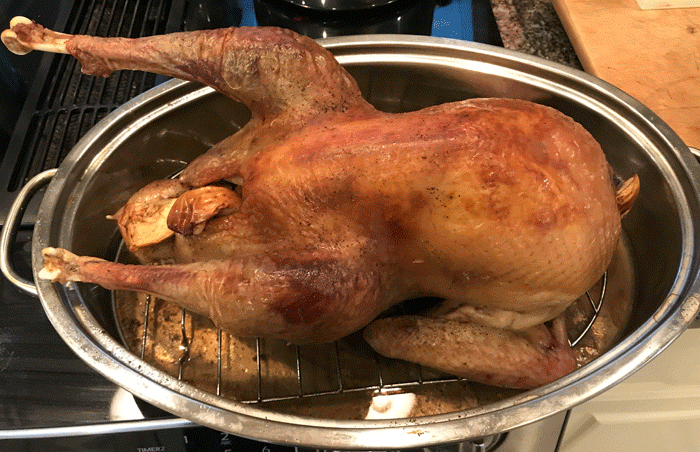
Do You Have Experience With Dental Materials? Please Share
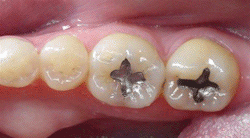
Question from Sharon
Hi Debra,
I just had a cavity fixed and I had a reaction to the dental bonding material – mouth got really extremely dry and burning sensation, hard to swallow, one part of my lower lip a little swollen -just from the fumes after she put the bonding agent in my tooth. It will be 3 days tomorrow since the work was done.
I have been using the same materials for several years with a little swallowing problems, but goes away after a day. I took just a little bit of antihistamine last night and woke up with a really dry mouth and sore throat. Very concerned. I see a holistic dentist but they just told me to gargle (??) I have done that a few times, flushed the mouth several times while I was there, brushed my teeth, gums, upper mouth, all over the tongue – still an issue.
Wondering if I might need to have this stuff removed. But not sure what I would put in place of it. I don’t want to go to urgent care, they will just tell me to take antihistamines. I did the dental testing. I am sensitive to everything.
Have you heard about any non-toxic glues/dental materials? Or, what do other people with MCS do or use? Thank you.
Debra’s Answer
Dear readers, I need your help answering this question.
I can research from online materials, however, the best answers come from real experience.
I am fortunate to have not needed cavities filled and other dental work, so I don’t have experience in this area.
But I know many of you have because you have given bits and pieces of information in other comments.
I’d love to put together a really good resource for getting nontoxic dental work done.
If you have knowledge or experience with this, please comment.
Thank you.
Finding Free Nontoxic Products
Most of what I write about on this website is how to find nontoxic products for purchase. Because most readers are buying products rather than making them.
But I do want to mention that it is also possible to simply find nontoxic products or have them “fall out of the sky.”
Three times in the past month I’ve had nontoxic products just appear. So I just want to acknowledge that there are nontoxic products everywhere and they can be obtained by means other than buying them.
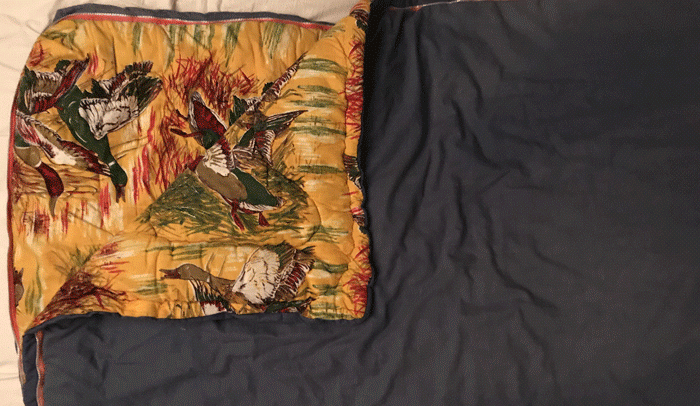 The first one appeared on the night I moved here to California. All my things were packed but we were moving into Larry’s room at his mom’s house, so a lot of his things from the past were there. My wool comforter from Shepherd’s Dream was in the storage locker, so we just unzipped Larry’s old sleeping bag and threw it on the bed. I have to say I love this old sleeping bag so much that I don’t even want to go get my comforter. It’s got a 100% cotton cover on the outside, a 100% cotton flannel lining and 100% cotton batting on the inside (we know this because it’s so old the lining is frayed and the stuffing is coming out). It’s toasty warm, makes me think of Larry as a little boy lying out under the trees and stars in this sleeping bag, and we can just toss it in the washer and dryer and it comes out all clean and warm. We are planning now to repair it and use it for our comforter. We’ll keep our wool comforter too because we sleep with the window open and it can get cold here.
The first one appeared on the night I moved here to California. All my things were packed but we were moving into Larry’s room at his mom’s house, so a lot of his things from the past were there. My wool comforter from Shepherd’s Dream was in the storage locker, so we just unzipped Larry’s old sleeping bag and threw it on the bed. I have to say I love this old sleeping bag so much that I don’t even want to go get my comforter. It’s got a 100% cotton cover on the outside, a 100% cotton flannel lining and 100% cotton batting on the inside (we know this because it’s so old the lining is frayed and the stuffing is coming out). It’s toasty warm, makes me think of Larry as a little boy lying out under the trees and stars in this sleeping bag, and we can just toss it in the washer and dryer and it comes out all clean and warm. We are planning now to repair it and use it for our comforter. We’ll keep our wool comforter too because we sleep with the window open and it can get cold here.
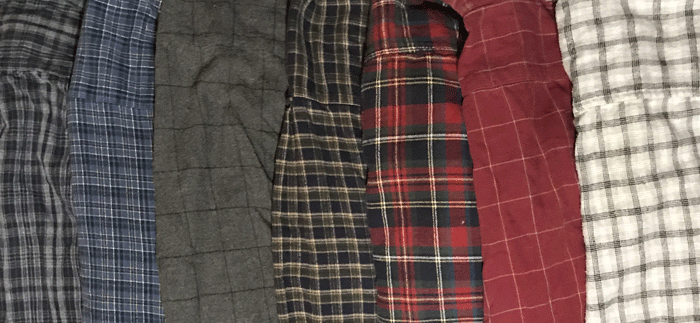 Then I needed some winter clothes. I had been living in Florida for 15 years so my winter clothes consisted of three frayed flannel shirts. I bought two more flannel shirts a few weeks ago on sale at Macy’s. But then yesterday we started cleaning out Larry’s closet and we found seven flannel shirts that were practically new! And they were exactly the right size for me. Larry didn’t want to wear them because he likes to wear fitted shirts and he had lost weight and these were now too big. But I like to wear baggy shirts, so they were perfect for me. Now I have a whole pile of flannel shirts and I didn’t spend a penny.
Then I needed some winter clothes. I had been living in Florida for 15 years so my winter clothes consisted of three frayed flannel shirts. I bought two more flannel shirts a few weeks ago on sale at Macy’s. But then yesterday we started cleaning out Larry’s closet and we found seven flannel shirts that were practically new! And they were exactly the right size for me. Larry didn’t want to wear them because he likes to wear fitted shirts and he had lost weight and these were now too big. But I like to wear baggy shirts, so they were perfect for me. Now I have a whole pile of flannel shirts and I didn’t spend a penny.
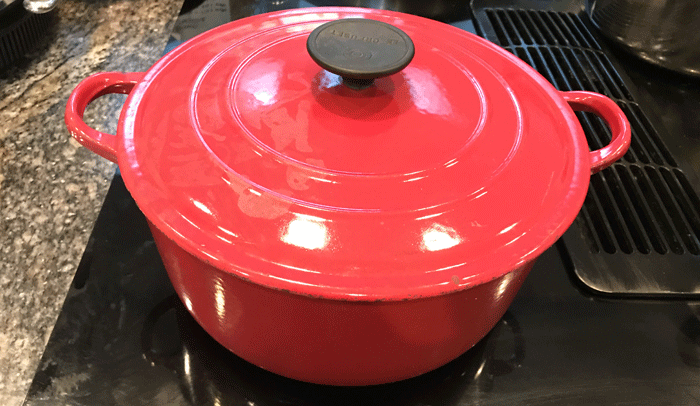 Then, when we went to Goodwill to take in all the clothes from Larry’s closet we had discarded, at the very moment we drove up there was a woman there wanting to donate a red Le Creuset cooking pot. We have one and we love it and we were wanting more. But Goodwill didn’t want it! The woman was about to leave to take it somewhere else and Larry said, “Are you giving that away?” And the woman just handed it to him. This is a $300 pot.
Then, when we went to Goodwill to take in all the clothes from Larry’s closet we had discarded, at the very moment we drove up there was a woman there wanting to donate a red Le Creuset cooking pot. We have one and we love it and we were wanting more. But Goodwill didn’t want it! The woman was about to leave to take it somewhere else and Larry said, “Are you giving that away?” And the woman just handed it to him. This is a $300 pot.
So keep your eyes open. You never know what nontoxic products will cross your path.
How to find a holistic home?
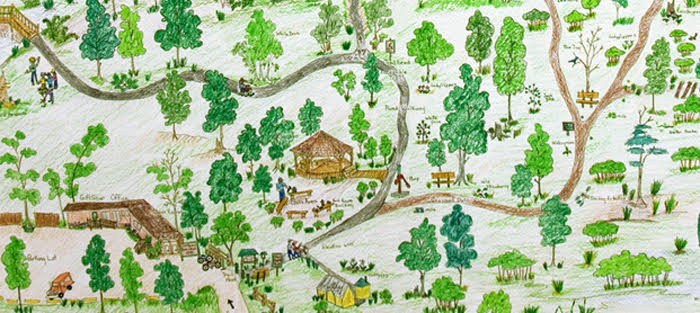
Question from Emily
Hi Debra,
Thank you for all the information you have worked hard to share with others. There’s so much helpful advice on your website and I have barely started to read through it!
I am in transition as far as a place to live and am looking for a holistic home.. and by that, I mean, a home that wasn’t built with toxic building materials, is not near power lines or towers/antennas, and where I don’t have to dread the neighbors’ wifi networks. I would especially like to find such a home in a peaceful country-like setting, near organic farms and perhaps in or near a community of like-minded people (eco communities, or farming communities).
The problem is that I don’t know where to start and how to even search for such a place.
Do you have any suggestions?
Thank you.
Debra’s Answer
I’ve been doing this for three decades, so yes, I have a few suggestions.
First look for the setting. This is extremely important. When I move, I always look for the setting first.
I’m looking for clean outdoor air. So that’s going to be in a rural area, or a city like San Francisco which is right on the Pacific Ocean and has a lot of wind. The Richmond and Sunset districts of San Francisco, Daly City and all the communities along the coast there, for example, are residential communities where there is no industry or commercial farming, so the air is very clean and the houses are old. I know that’s not what you are looking for, it’s just an example.
I’m currently living in a small town in Sonoma County, California that is a few miles inland from the Pacific Ocean but there is nothing but open space between the ocean and our town. So it’s very clean and we have organic farms and you would find like-minded people here. But it’s also extremely expensive and at the moment there is NO housing. I have the extreme good fortune to live here because my family lives here.
Before this I lived in Florida at the top of a hill overlooking the Gulf of Mexico. I had no view, but I had clean air. Even though it was in a suburban neighborhood and not a rural area, the air was clean.
Before that I lived in a forest in a rural area in Marin County, California.
I’ve also lived in other towns in Marin County and in the city of San Francisco.
For you, I would look for a rural area near open space near a body of water.
Then I would find an area not near high tension power lines, towers, antennas, etc. You can’t avoid power lines entirely unless you are off the grid.
Then I would start looking for the house made with nontoxic materials. And that’s a whole separate set of guidelines.
Start looking for the place and when you find it, ask me again about finding the house.
Want a Turkey Worth Gobbling? Here’s What to Look for on the Label
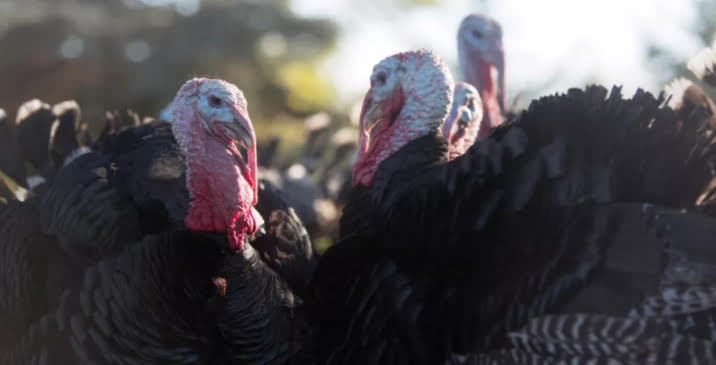
A couple of nights ago around the dinner table I asked my new family what everyone wanted for Thanksgiving dinner. Turkey, of course, homemade cranberry sauce, and gluten-free cornbread and rice stuffing with wild mushrooms topped the list. Since, as the best cook in the house, I’ll be doing most of the cooking, and we are living in Sonoma County, California—where we actually grow and raise some of the best food on Earth—I started wondering if we could get some kind of special turkey.
So I put together this list of what to look for on the label to help me find the perfect turkey for this year’s Thanksgiving dinner.
Here’s What You Get When You Buy a Cheap Turkey
The first thing to know about cheap turkeys is they are a hybrid breed that have been created to produce a lot of breast meat “Broad-breasted White” they are called. These turkeys are now so large that all are artificially inseminated because they simply can’t do it themselves.
They are also so big they cannot walk.
They are also bred to grow faster than the natural turkey and are give growth hormones.
These turkeys are raised in factory farms in overcrowded conditions.
Their feed is made from GMO corn and soy that has been sprayed with pesticides.
Excessive quantities of antibiotics are given to birds, and other chemicals may be used in processing.
PENN STATE EXTENSION: Modern Turkey Industry.
All Natural Turkeys
The word “natural” on the label of a turkey refers to how a turkey is processed, not raised.
A product can be claimed natural if it is minimally processed and contains no artificial ingredients, including chemical preservatives.
The United States Department of Agriculture (USDA) has a definition of “natural” that pertains to turkeys (and all meats)
According to the USDA, “all natural” meats and poultry can only be called such when:
- No animal by-products were fed to the animals
- No growth promotants were administered to the animals
- No antibiotics are used (except for ionophores used as coccidiostats for parasite control)
The USDA only approves phrases including “raised without antibiotics,” “no added antibiotics” or “no antibiotics ever,” which indicate the animal did not receive antibiotics in their feed, water or by injection. The phrase “antibiotic-free” is not approved for meat and poultry labels.
Natural turkeys are hybrid Broad-breasted Whites and the meat would still have pesticide residues from their feed, Most are fed a “vegetarian” feed made up of GMO corn and GMO soy. But “all natural” is a step in the right direction.
Your local natural food store will certainly carry an all-natural turkey and you might find them in some higher-end markets as well. They are slightly more expensive than the cheap turkeys and a good choice if you can’t afford organic.
Organic Turkeys
Once again, organic turkeys are hybrid Broad-breasted Whites. The difference with organic is they are raised with certified USDA organic practices, so the meat is free from hormones and other growth regulators, antibiotics, GMOs and pesticides. They are usually farm raised and often drink well water.
Most natural food stores sell organic turkeys. They are twice the price of natural turkeys.
Heritage Turkeys
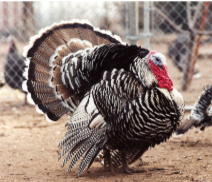 A heritage turkey is one of eight specific breeds certified by the American Poultry Association. These breeds were raised in the USA prior to the 1950s, when the poultry industry began to cross breeding the commodity Broad-breasted White turkeys that are commonly sold today.
A heritage turkey is one of eight specific breeds certified by the American Poultry Association. These breeds were raised in the USA prior to the 1950s, when the poultry industry began to cross breeding the commodity Broad-breasted White turkeys that are commonly sold today.
“Heritage” does not mean organic, all natural, or free range, though a true heritage bird should be free of artificial ingredients, raised on a farm and eat feed free from pesticides.
Heritage birds are different from Broad-breasted Whites in a number of ways. They:
- are smaller
- are prettier, often with elegant dark or colored feathers
- mature more slowly (24 to 30 weeks, versus about 12 to 18 weeks for a commodity turkey)
- can live longer—up to 15 years, instead of a year and a half.
- can have sex normally and reproduce
- have big, strong legs that can walk on their own
- are raised outdoors and freely roam on pasture
- eat the varied diet nature intended them to eat,
I’ve read that heritage birds are juicy and succulent and taste the way a turkey is supposed to taste. The meat is darker and gamier-tasting and tougher, so you won’t have the Broad-breasted White experience. And it can be harder to cook (here are some tips) . But you’ll actually be eating turkey, the same turkey everyone ate before 1950.
Heritage birds are more expensive to raise, and so are more expensive per pound to buy.
As of this writing there is no official certification program for the identification and labeling of heritage birds the way there is for organics. Although turkey producers are required to submit documentation to the USDA showing that the turkeys they’re going to call heritage are one of the officially recognized heritage breeds, this process is not as strict and regulated as needed to be dependably reliable.
Here’s where you really need to know your grower and ask questions and not rely on labels.
If you are willing to spend more money, do a little advance planning, and look beyond even your local natural food store, consider a heritage turkey. I’m considering this now because for once in my life I want to experiencing eating a REAL turkey.
Slow Food USA
American Livestock Breeds Conservancy
Livestock Conservancy
Wild Turkeys
When I used to live in a small village in a rural part of Northern California, we had wild turkeys and some of the locals would hunt and eat them. I never did but I’m very curious to know what they taste like.
You can purchase wild turkeys online that have been farm-raised on natural forage with supplemental feed.
Wild turkeys are small birds with a slightly gamey flavor
Now this would be more like the turkeys served at the first Thanksgiving.
The Turkey I Chose This Year
After all this research, I decided to pre-order a heritage turkey, grown by local Sonoma County 4H club members and sold through the Slow Food Russian River Heritage Turkey Project.
You can only get one if you come pick one up in Sonoma County, California. But look around your local community. There might be a similar program.
At $9.00 a pound, it will be the most expensive turkey I’ve ever purchased, but it will be well worth it. In addition to the enjoyment of flavor and satisfaction of curiosity, I will also be contributing to the education of future farmers and the preservation of heritage breeds, and I will experience food closer to it’s original state in nature. I think that’s an excellent investment.
I’m actually going to see if I can participate in the whole experience of visiting my turkey live and being at the slaughter instead of just picking it up in a bag.
I’ll let you know how this goes.
A Toxic Free Aesthetic
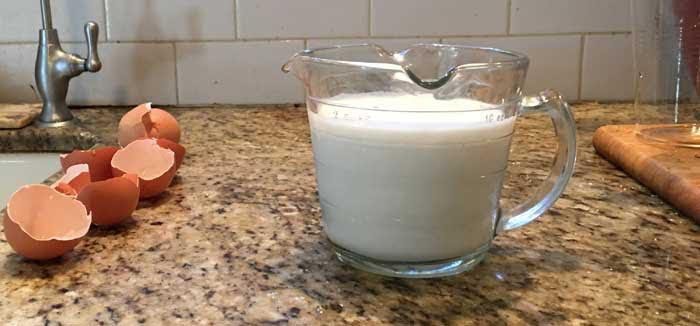
A few weeks ago I received this email from a reader:
“I’m wondering where you got your glass measuring cup shown here: https://www.debralynndadd.com/toxic-free-kitchen/dish/beverage/fresh-coconut-milk-and-cream/
It looks like it is free of painted-on markings and has multiple pour spouts. Just wondering what brand it is.”
I replied that I purchased it at Crate and Barrel a few years ago, but they don’t sell it any more.
But this question got me thinking about design and style and aesthetics, and how one might define a “toxic free aesthetic.”
Aesthetics in general have to do with the beauty of something.
An aesthetic is a set of principles underlying and guiding the work of a particular artist or artistic movement. So one might say “a Victorian aesthetic.”
But I think this term could just as well be used to refer to how design and it’s beauty or lack thereof results from a particular set of principles.
For example, the “modern” aesthetic is rooted in industrial manufacturing. So instead of items having a style that emerges from things made by hand from natural materials, for example, forms are simple and made from materials that can flow cheaply and easily through an industrial manufacturing process.
Which led me to wonder: If we started with being toxic free as a guiding principle, what might the aesthetic look like?
Measuring Cup
This measuring cup in the photo above I think is a good example of toxic free aesthetic.
It’s simple and direct, form following function.
It uses a nontoxic material.
And it incorporates the design into the material of the product, rather than use a different material.
In the case of the measuring cup, most measuring cups use paint to mark lines and numbers. While the paint is nontoxic by the time it reaches the user, the paint itself is toxic and likely would produce toxic waste during manufacture, use, and disposal.
So part of the aesthetic would be to choose materials throughout that create zero toxic exposure or waste at all stages of the life cycle.
 Clock
Clock
With the idea of toxic free aesthetic in mind, when I walked into a reception area and saw this cute little clock sitting on the counter, I immediately thought, “Oh this is toxic free aesthetic!”
Even though I hadn’t yet formulated guidelines, I could recognized it when I see it.
In real life, this appears to be an unfinished block of wood (no noticeable finish or odor) with a luminous LED display (the light aspect of it doesn’t really show in the photo).
I don’t know how they get the light into the wood, but the materials are simply wood and light.
I’m going to order one of these for myself. I need a clock I can see in the dark for my bedroom and this is perfect.
GEARONIC Wooden Alarm Clock. Tells time, date, temp and also has an alarm clock function via LED Light. Tells time, date, temperature and also has an alarm clock function. Three AAA batteries, “No buttons or plastic parts.”
NOTE: The one I saw was battery-powered. The description says it is powered with USB cable. I think you can use either.
Face
Two things inspired me to write this section.
First, I’ve been going to farmer’s markets every weekend for the past month and one of the things I’ve noticed is the beautiful faces of these farm women who are growing food and out in the fields. Just their beautiful bare faces without make-up.
And then I came across a photo ID card in my wallet with a picture that was taken on the spur of the moment. I had no makeup on because I don’t wear makeup everyday. I only wear makeup when I need to have a “professional” look.
And I looked at that bare-face ID card next to my driver’s license photo with makeup and I really preferred my bare-face photo!
 |
 |
| Debra with Make-Up | Debra without Make-Up |
I was surprised because the idea of “beauty” that is promoted in the consumer world is full makeup and hairstyle, but my aesthetic is becoming wanting to see the beauty of the actual face of the person, rather than have it obscured with makeup.
So I think the toxic free aesthetic is no makeup or minimal makeup rather than looking “painted,”
Creating a Toxic Free Aesthetic
I think this is an ongoing discussion. I would love to hear your thoughts.
And I would love to develop a toxic free aesthetic that designers could use to create products that we would enjoy using.
Feel free to post other products you think have a toxic free design aesthetic in the comments. With images.







